Graphite is an important non-metallic mineral with excellent electrical conductivity, thermal conductivity, high temperature resistance and other properties. These excellent properties make graphite widely used in metallurgy, machinery, electronics and other fields. Graphite can be divided into crystalline graphite and cryptocrystalline graphite according to its crystal structure and physical properties. Crystalline graphite has a high carbon content and is easy to purify. It is often used in high-end industrial fields, while cryptocrystalline graphite contains more impurities and is mainly used in traditional industrial fields such as casting, coatings and lubrication. According to the characteristics of graphite ore, choose a suitable beneficiation method to improve the utilization rate of mineral resources. The embedded particle size and occurrence state of graphite ore determine the complexity and pertinence of its beneficiation process. Flotation is a commonly used method for graphite ore beneficiation. The following will introduce you to the principles, processes, process design and optimization of graphite flotation to help you better understand graphite beneficiation technology.
Use the table of contents below to navigate through the guide:
01Graphite flotation process principle
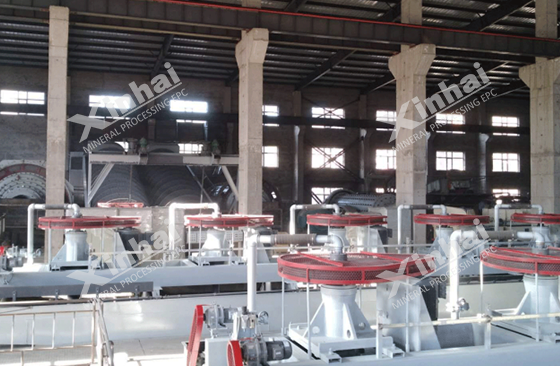
The graphite flotation process uses the natural hydrophobicity of the graphite surface. After adding collectors and frothers to the pulp, the hydrophobicity of the mineral surface is increased, so that it adheres to the bubble surface and floats to the pulp surface with the bubbles to become a foam product, thereby achieving separation from the gangue minerals. The collectors used in the graphite flotation process are oleic acid and kerosene, the commonly used frothers are pine oil and methyl isobutyl carbinol, the inhibitors used are water glass and carboxymethyl cellulose, and lime and sulfuric acid can be used as pH adjusters in the graphite flotation process. Choosing the appropriate flotation process and reagent system can improve the efficiency of graphite flotation.
02Graphite flotation process flow
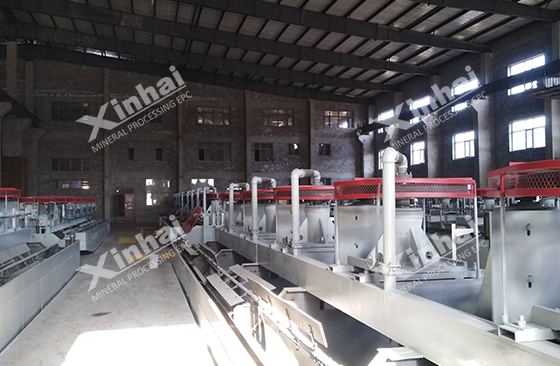
The graphite flotation process mainly includes the following 6 processes:
1. Crushing and grinding: Graphite ore needs to be crushed and ground into a suitable particle size to facilitate subsequent flotation treatment. Generally, it is necessary to adopt multi-stage crushing and closed-circuit grinding processes to reduce mud formation caused by over-crushing.
2. Desliming: Fine-grained muddy minerals will affect the action of chemicals on minerals, resulting in poor flotation effect. Therefore, desliming is used to remove fine particles in the slurry. Commonly used equipment include cyclones and desliming screens. .
3. Rough separation: the first stage of flotation, the main purpose is to quickly recover graphite and reduce flotation losses. The rough selection product is the medium ore, and then enters the selection process.
4. Selection: Multiple selections of rough concentrates to remove residual impurities can significantly improve the quality of graphite concentrates.
5. Scavenging: Scavenging rough selection tailings can recover uncollected graphite particles and improve the recovery rate of graphite ore.
6. Dehydration: After the flotation concentrate product is concentrated, filtered and dried, a high-grade graphite ore concentrate product with low water content can be obtained.
The graphite ore flotation process should be adjusted in real time according to actual production conditions to avoid waste of resources and increase in costs.
03Graphite flotation equipment selection and process design
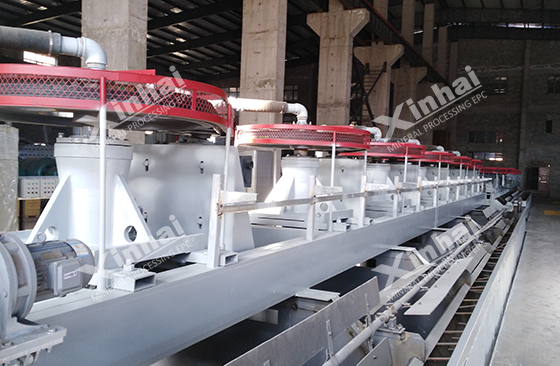
The selection of flotation equipment should be based on the properties of graphite ore, flotation scale and beneficiation budget. Commonly used equipment are as follows:
Flotation equipment: mechanical agitation flotation machine, aerated flotation machine and column flotation machine. Among them, mechanical agitation flotation machine is widely used in graphite ore flotation due to its simple operation and wide range of applications.
Desliming equipment: As mentioned above, it is often used to remove fine-grained mud, mainly coupled with cyclone, desliming screen and sedimentation tank.
Concentration and filtration equipment: Graphite concentration equipment often uses high-efficiency thickeners, and filtration equipment includes vacuum filters, which are often used for concentrate dehydration.
When designing the graphite flotation process, it is necessary to focus on the selection of flotation reagents at each stage, the amount of reagents added, the flotation time, and the pulp concentration and other parameters to ensure efficient flotation.
04Graphite flotation process optimization and innovation
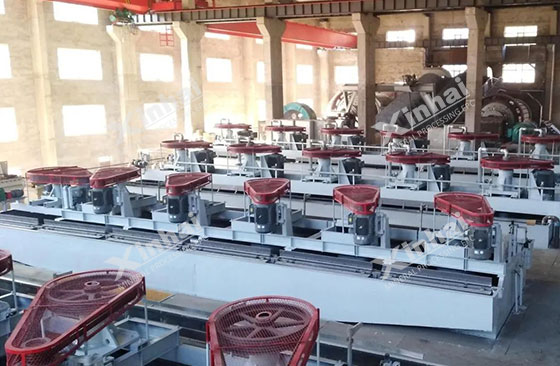
With the development of mineral processing industry technology and the increase in graphite demand, the requirements for graphite mineral processing technology are constantly increasing. It is necessary to optimize and innovate flotation technology in a timely manner to improve the economic benefits of mineral processing.
-Agent system optimization: Use efficient and environmentally friendly flotation agents to improve flotation efficiency and reduce environmental pollution.
-Mineral processing process optimization: When processing low-grade and complex graphite ores, it is necessary to add a classification process to improve the roughing and concentrating efficiency through multiple grinding and classification processes.
-Mineral processing equipment improvement: Use more efficient and energy-saving flotation equipment to improve the automation and economy of the flotation process.
05Xinhai Graphite Flotation Ore Dressing Case
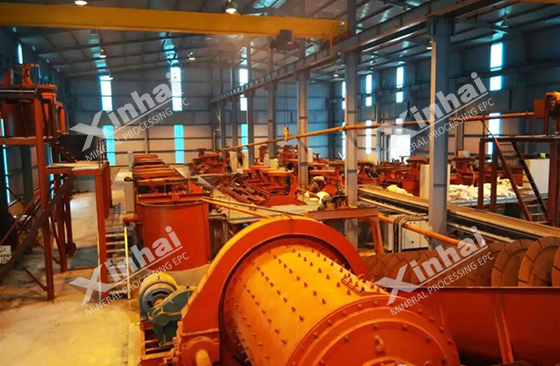
The 800tpd graphite ore dressing plant in Vietnam is an EPCM+O project of Xinhai Mining, which demonstrates Xinhai's professional advantages in the field of graphite ore dressing. In view of the characteristics of the graphite ore in this project, Xinhai Mining designed a process flow of "two-stage closed-circuit crushing-one-stage closed-circuit grinding and classification-one-stage roughing, two-stage scavenging, and ten-stage flotation" with efficient ore dressing advantages. Through the perfect process configuration and reagent system, a high recovery rate of 92% was successfully achieved, which improved the economic benefits of the ore dressing plant. This project demonstrates the comprehensive strength of Xinhai Mining in graphite ore dressing process design and equipment configuration.
The above content is a summary of graphite flotation technology. Flotation technology is an important way to improve the efficiency of graphite resource utilization and a key link in achieving green development and sustainable development of mineral resources. In the future, the development of new flotation agents, the design of efficient process flow, and the gradual intelligentization of mineral processing will all be developed to a certain extent. Graphite mines will further achieve efficient, green and economic development and realize the rational and efficient development and utilization of stone mineral resources.


 marketing@ytxinhai.com
marketing@ytxinhai.com  0086 13810327080
0086 13810327080 






































































































 CHAT
CHAT MESSAGE
MESSAGE






